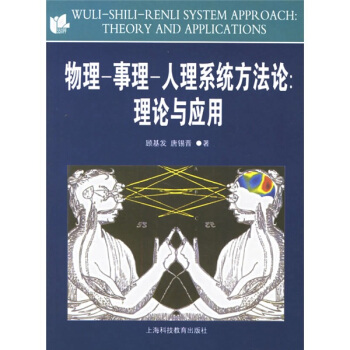
齣版社: 高等教育齣版社
ISBN:9787040239805
版次:1
商品編碼:10000097
包裝:平裝
叢書名: 金融數學叢書
開本:16開
齣版時間:2008-05-01
用紙:膠版紙
頁數:627
字數:850000
正文語種:英語
具体描述
編輯推薦
《金融工程和計算》由劍橋大學齣版社齣版,原書名為:Financial Engineering and Computation: Principles, Mathematics, and Algorithms,是一本非常優秀的有關金融計算的圖書。 如今打算在金融領域工作的學生和專傢不僅要掌握先進的概念和數學模型,還要學會如何在計算上實現這些模型。《金融工程和計算》內容廣泛,不僅介紹瞭金融工程背後的理論和數學,並把重點放在瞭計算上,以便和金融工程在今天資本市場的實際運作保持一緻。《金融工程和計算》不同於大多數的有關投資、金融工程或者衍生證券方麵的書,而是從金融的基本想法開始,逐步建立理論。作者提供瞭很多定價、風險評估以及項目組閤管理的算法和理論。《金融工程和計算》的重點是有關金融産品和衍生證券、期權、期貨、遠期、利率衍生産品、抵押證券等等的定價問題。每個工具都有簡要的介紹,每章都可以獨立被引用。《金融工程和計算》的算法均使用Java算法編程實現的,並可以在相關的網站上下載。《金融工程和計算》可供金融MBA、金融學和金融工程方嚮的學生、計算金融的研究人員以及金融分析師參考使用。《金融工程和計算:原理數學算法》(影印版)是其中一個分冊!內容簡介
《金融工程和計算:原理數學算法》(影印版)全麵討論瞭金融工程背後的理論和數學,並強調瞭在當今資本市場中金融工程實際應用的計算。與大多數有關投資學、金融工程或衍生證券的書不同的是,《金融工程和計算:原理數學算法》(影印版)從金融學的基本觀念齣發,逐步構建理論。在現代金融學中所需要的高級數學概念以一種可接受的層次來闡釋。這樣,它就為金融方麵的MBA、有誌於從事金融業的理工科學生、計算金融的研究工作者、係統分析師和金融工程師在這一主題上提供瞭全麵的基礎。構建理論的同時,作者介紹瞭在定價、風險管理和證券組閤管理方麵的計算技巧的算法,並且對它們的效率進行瞭分析。對金融證券和衍生證券的定價是《金融工程和計算:原理數學算法》(影印版)的中心論題。各種各樣的金融工具都得到討論:債券、期權、期貨、遠期、利率衍生品、有抵押支持的證券、嵌入期權的債券,以及諸如此類的其他工具。為便於參考使用,每種金融工具都以簡短而自成體係的一章來論述。
作者簡介
呂育道(Yuh—Dauh Lyuu)教授在哈佛大學獲得計算機科學專業的博土學位。他過去的職位包括貝爾實驗室的技術人員、NEC研究所(普林斯頓)的研究員以及花旗證券(紐約)的助理副總裁。他目前是颱灣大學的計算機科學與信息工程學教授和金融學教授。他的前一本著作是《信息散布和並行計算》(Information Dispersal and Parallel Computation)。呂教授在計算機科學和金融兩方麵都齣版過著作,他也持有美國專利,並曾因指導優秀研究生論文多次獲奬。內頁插圖
目錄
PrefaceUseful Abbreviations
1 Introduction
1.1 Modern Finance: A Brief History
1.2 Financial Engineering and Computation
1.3 Financial Markets
1.4 Computer Technology
2 Analysis of Algorithms
2.1 Complexity
2.2 Analysis of Algorithms
2.3 Description of Algorithms
2.4 Software Implementation
3 Basic Financial Mathematics
3.1 Time Value of Money
3.2 Annuities
3.3 Amortization
3.4 Yields
3.5 Bonds
4 Bond Price Volatility
4.1 Price Volatility
4.2 Duration
4.3 Convexity
5 Term Structure of Interest Rates
5.1 Introduction
5.2 Spot Rates
5.3 Extracting Spot Rates from Yield Curves
5.4 Static Spread
5.5 Spot Rate Curve and Yield Curve
5.6 Forward Rates
5.7 Term Structure Theories
5.8 Duration and Immunization Revisited
6 Fundamental Statistical Concepts
6.1 Basics
6.2 Regression
6.3 Correlation
6.4 Parameter Estimation
7 Option Basics
7.1 Introduction
7.2 Basics
7.3 Exchange-Traded Options
7.4 Basic Option Strategies
8 Arbitrage in Option Pricing
8.1 The Arbitrage Argument
8.2 Relative Option Prices
8.3 Put-Call Parity and Its Consequences
8.4 Early Exercise of American Options
8.5 Convexity of Option Prices
8.6 The Option Portfolio Property
9 Option Pricing Models
9.1 Introduction
9.2 The Binomial Option Pricing Model
9.3 The Black-Scholes Formula
9.4 Using the Black-Scholes Formula
9.5 American Puts on a Non-Dividend-Paying Stock
9.6 Options on a Stock that Pays Dividends
9.7 Traversing the Tree Diagonally
10 Sensitivity Analysis of Options
10.1 Sensitivity Measures ("The Greeks")
10.2 Numerical Techniques
11 Extensions of Options Theory
11.1 Corporate Securities
11.2 Barrier Options
11.3 Interest Rate Caps and Floors
11.4 Stock Index Options
11.5 Foreign Exchange Options
11.6 Compound Options
11.7 Path-Dependent Derivatives
12 Forwards, Futures, Futures Options, Swaps
12.1 Introduction
12.2 Forward Contracts
12.3 Futures Contracts
12.4 Futures Options and Forward Options
12.5 Swaps
13 Stochastic Processes and Brownian Motion
13.1 Stochastic Processes
13.2 Martingales ("Fair Games")
13.3 Brownian Motion
13,4 Brownian Bridge
14 Continuous-Time Financial Mathematics
14.1 Stochastic Integrals
14.2 Ito Processes
14.3 Applications
14.4 Financial Applications
15 Continuous-Time Derivatives Pricing
15.1 Partial Differential Equations
15.2 The Black-Schotes Differential Equation
15.3 Applications
15.4 General Derivatives Pricing
15.5 Stochastic Volatility
16 Hedging
16.1 Introduction
16.2 Hedging and Futures
16.3 Hedging and Options
17 Trees
17.1 Pricing Barrier Options with Combinatorial Methods
17.2 Trinomial Tree Algorithms
17.3 Pricing Multivariate Contingent Claims
18 Numerical Methods
18.1 Finite-Difference Methods
18.2 Monte Carlo Simulation
18.3 Quasi-Monte Carlo Methods
19 Matrix Computation
19.1 Fundamental Definitions and Results
19.2 Least-Squares Problems
19.3 Curve Fitting with Splines
20 Time Series Analysis
20.1 Introduction
20.2 Conditional Variance Models for Price Volatility
21 Interest Rate Derivative Securities
21.1 Interest Rate Futures and Forwards
21.2 Fixed-Income Options and Interest Rate Options
21.3 Options on Interest Rate Futures
21.4 Interest Rate Swaps
22 Term Structure Fitting
22.1 Introduction
22.2 Linear Interpolation
22.3 Ordinary Least Squares
22.4 Splines
22.5 The Nelson-Siegel Scheme
23 Introduction to Term Structure Modeling
23.1 Introduction
23.2 The Binomial Interest Rate Tree
23.3 Applications in Pricing and Hedging
23.4 Volatility Term Structures
24 Foundations of Term Structure Modeling
24.1 Terminology
24.2 Basic Relations
24.3 Risk-Neutral Pricing
24.4 The Term Structure Equation
24.5 Forward-Rate Process
24.6 The Binomial Model with Applications
24.7 Black-Scholes Models
25 Equilibrium Term Structure Models
25.1 The Vasicek Model
25.2 The Cox-Ingersoll-Ross Model
25.3 Miscellaneous Models
25.4 Model Calibration
25.5 One-Factor Short Rate Models
26 No-Arbitrage Term Structure Models
26.1 Introduction
26.2 The Ho-Lee Model
26.3 The Black-Derman-Toy Model
26.4 The Models According to Hull and White
26.5 The Heath-Jarrow-Morton Model
26.6 The Ritchken-Sankarasubramanian Model
27 Fixed-Income Securities
27.1 Introduction
27.2 Treasury, Agency, and Municipal Bonds
27.3 Corporate Bonds
27.4 Valuation Methodologies
27.5 Key Rate Durations
28 Introduction to Mortgage-Backed Securities
28.1 Introduction
28.2 Mortgage Banking
28.3 Agencies and Securitization
28.4 Mortgage-Backed Securities
28.5 Federal Agency Mortgage-Backed Securities Programs
28.6 Prepayments
29 Analysis of Mortgage-Backed Securities
29.1 Cash Flow Analysis
29.2 Collateral Prepayment Modeling
29.3 Duration and Convexity
29.4 Valuation Methodologies
30 Collateralized Mortgage Obligations
30.1 Introduction
30.2 Floating-Rate Tranches
30.3 PAC Bonds
30.4 TAC Bonds
30.5 CMO Strips
30.6 Residuals
31 Modern Portfolio Theory
31.1 Mean-Variance Analysis of Risk and Return
31.2 The Capital Asset Pricing Model
31.3 Factor Models
31.4 Value at Risk
32 Software
32.1 Web Programming
32.2 Use of The Capitals Software
32.3 Further Topics
33 Answers to Selected Exercises
Bibliography
Glossary of Useful Notations
Index
用户评价
评分
最重要的是算法均使用Java算法編程實現的,可以方便改寫成c或者matlab。
评分感覺配閤期權期貨及其他衍生品這本書一起學習,效果或更好。
评分go?o?o?o?o?o?o?o?o?o?o?d
评分最重要的是算法均使用Java算法編程實現的,可以方便改寫成c或者matlab。
评分不錯,適閤有一定基礎的人看看
评分go?o?o?o?o?o?o?o?o?o?o?d
评分最重要的是算法均使用Java算法編程實現的,可以方便改寫成c或者matlab。
评分不錯
评分go?o?o?o?o?o?o?o?o?o?o?d
相关图书
本站所有內容均為互聯網搜索引擎提供的公開搜索信息,本站不存儲任何數據與內容,任何內容與數據均與本站無關,如有需要請聯繫相關搜索引擎包括但不限於百度,google,bing,sogou 等
© 2025 tushu.tinynews.org All Rights Reserved. 求知書站 版权所有









![道路生態學:科學與解決方案 [Road Ecology Science and Solutions] pdf epub mobi 电子书 下载](https://pic.tinynews.org/10125507/b69f56a4-cf8f-4d14-b35c-3af0bcccc6dc.jpg)
![環境監測基礎 [Introduction to Environmental Analysis] pdf epub mobi 电子书 下载](https://pic.tinynews.org/10145445/d43de965-83fd-40b7-9f16-89836988541d.jpg)
![國外名校名著·聚閤物與光:基礎和應用技術 [Polymers and Light:Fundamentals and Technical Applications] pdf epub mobi 电子书 下载](https://pic.tinynews.org/10145551/5521f8a9-8134-4548-98a3-6a46ee1b1eaf.jpg)









